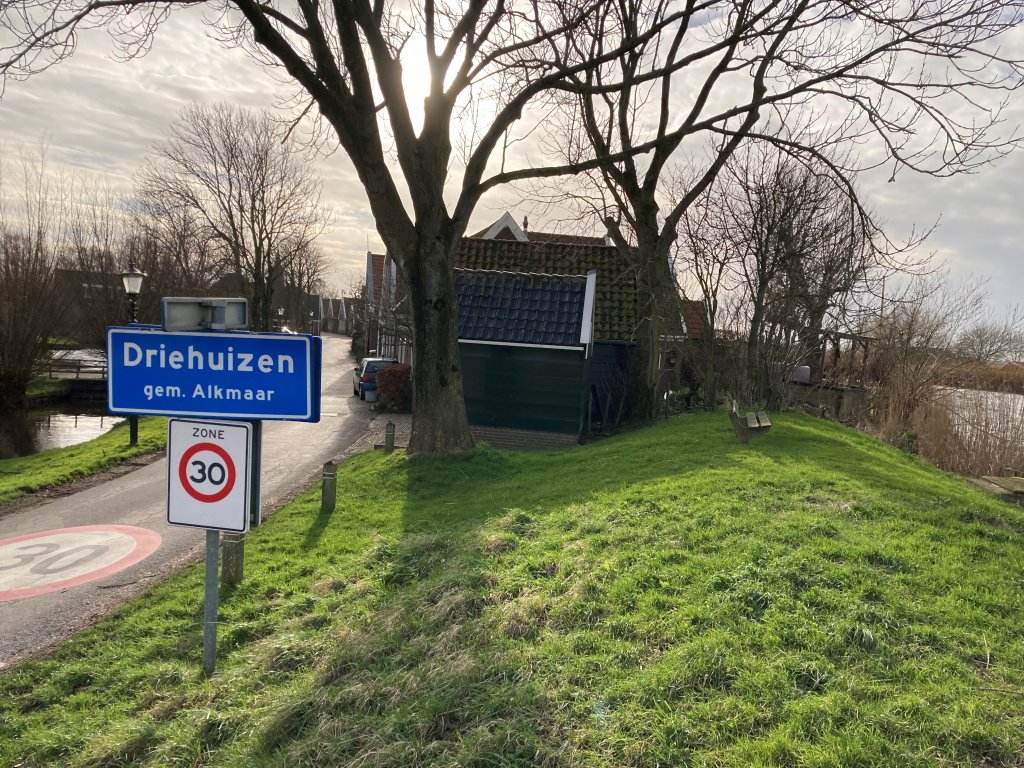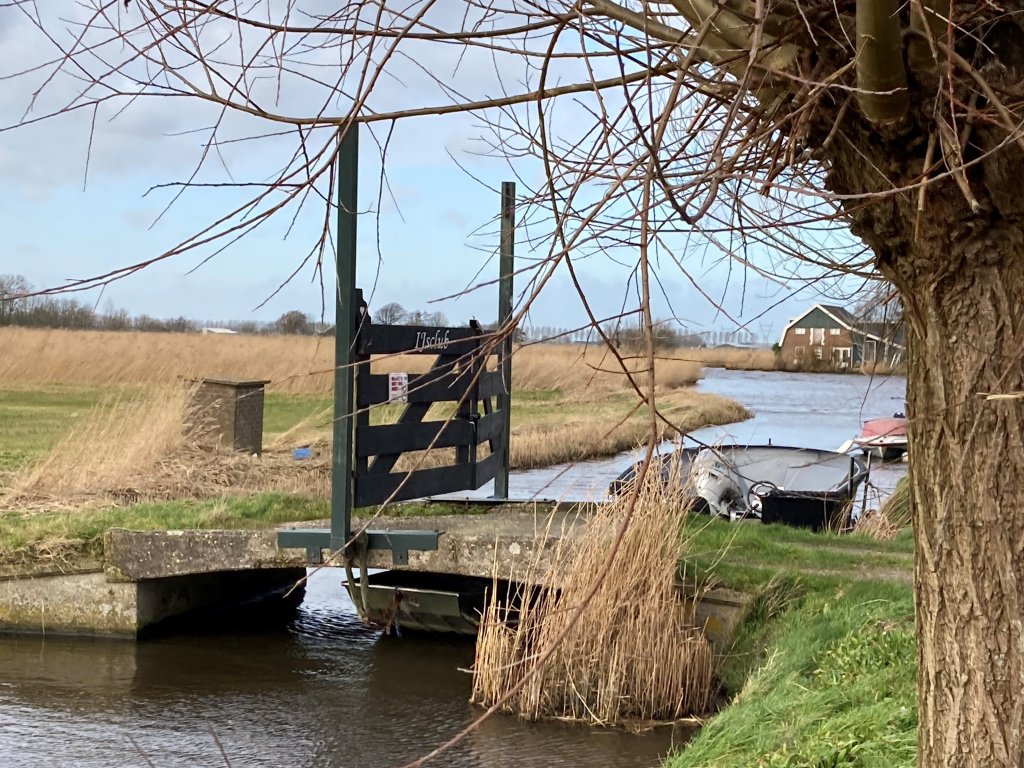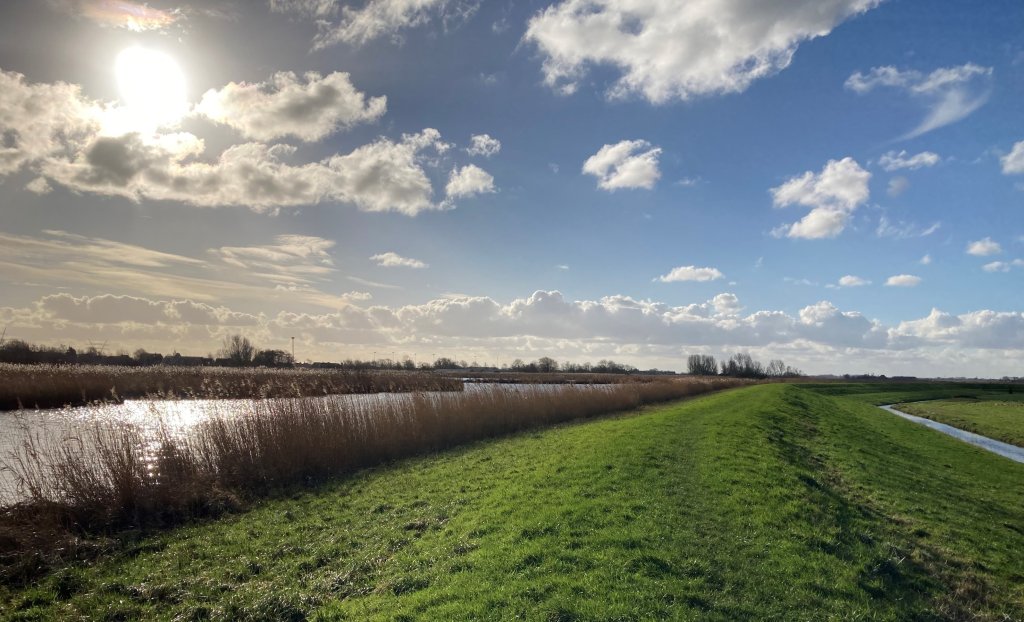Tour of Island Polder
No skating again this year! They find that very unfortunate in Friesland but certainly also in the Eilandspolder! For those who have no idea about this polder. Does the name Anton Pieck still ring a bell? It does.
Small picturesque ribbon villages, cheese-cover farmhouses, swaying reeds, twittering birds, dikes and, of course, lots and lots of water between the islands. Typically the Eilandspolder, an ideal skating environment. The Eilandspoldertocht organized by ice club Thialf(!) from Grootschermer (founded around 1900) normally attracts hundreds of skaters. But the polder is beautiful even when there is no ice. In that environment, our project team encounters all sorts of specific conditions that are characteristic of dike reinforcement in a Natura 2000 peatland area. The plant debris in the soil of this area continues to sink in. As a result, the entire polder is slowly sinking and so are the dikes.
I would like to take you to the dike reinforcement challenges in Driehuizen, Grootschermer and De Rijp, three gems in this North Holland polder.

Driehuizen, village of pancakes, whisper boats and customization
In this ribbon village along the Schermerringvaart, the dike is in the backyard of all the waterfront houses. That's precarious because you get to work with dike reinforcement in someone else's property. Last time, a flat barge carrying a lot of clay sailed past the gardens, they explained. A crane was used to move clay onto the side and you basically had to figure it out. This resulted in mini-dikes, raised vegetable gardens, smoothed out flowerbeds and rose gardens that were a bit higher up.
This time we are doing things very differently. We have invested heavily in kitchen table discussions and customization. A great opportunity to explain the function of the dike as a flood barrier and to gear the design, within the possibilities, to the wishes of the residents. But also quite difficult because you are constantly balancing between the necessary height and width of the dike and narrow gardens with little space.
How much soil do you bring up, taking into account the slack ground? After all, some houses are so low that the soil almost connects to the window sill. Besides, you don't want to come back in a few years to turn the gardens upside down again. So far, however, the team's close contact with the residents is paying off. Especially after the past wet autumn and winter, we don't have to explain much about the need for dyke reinforcement here.

Grootschermer, the village of ice club Thialf and water compensation
Further on, you arrive at Grootschermer via the Menningweerdijk. Time has stood still here if you look at the houses. But the number of traffic movements certainly has not. A very narrow road carries the axle load of many agricultural vehicles, cars and the bus. In fact, there is no room at all for all that traffic. Next to the road is a very narrow tumbled dike that has been condemned for its height, with parking spaces squeezed in between. Because of the limited space, cars are often partially parked on the dike with two wheels. The need for dike reinforcement has given us the opportunity here to address the situation. In our design, we widen the dike a little so that the dike gets a little more protection. As a result, we are damming a stretch of water along the entire thoroughfare. Fortunately, in consultation with Landschap Noord-Holland, we found a solution for the necessary water compensation. A piece of land just behind the ribbon development will be made into a puddle-dwelling area. In this way we stimulate nature at the site and the water compensation has also been given a place.

De Rijp, open-air museum in a Natura 2000 area
Busloads of tourists visit De Rijp every day. Understandably so because this village is North Holland at its most beautiful. We have a dike reinforcement project in the outskirts of this ancient whaling village. The Forestry Commission, its tenants and countless numbers of birds in the protected nature are our main stakeholders here. Because of the protected status of the area, the dike reinforcement will mainly take place with electric equipment. In this way we disturb nature as little as possible and are also working in a sustainable way. In any case, we cannot transport much soil over the narrow and vulnerable roads. We will therefore probably use the Beemsterringvaart to transport soil and equipment. But not everything can be transported by water. That is why we are in constant consultation with Stadswerk072, the implementing organization of the municipality of Alkmaar (new owner of the roads), to find solutions for our planned dyke reinforcement activities along and transport by road.
Dike reinforcement in the Island Polder there are quite a few snags. These are just a few that give a little idea. However, I hope it will encourage you, perhaps with a little professional deformation, to take a look at this unique polder yourself in a boat or by bicycle.
Chrétienne Nielen